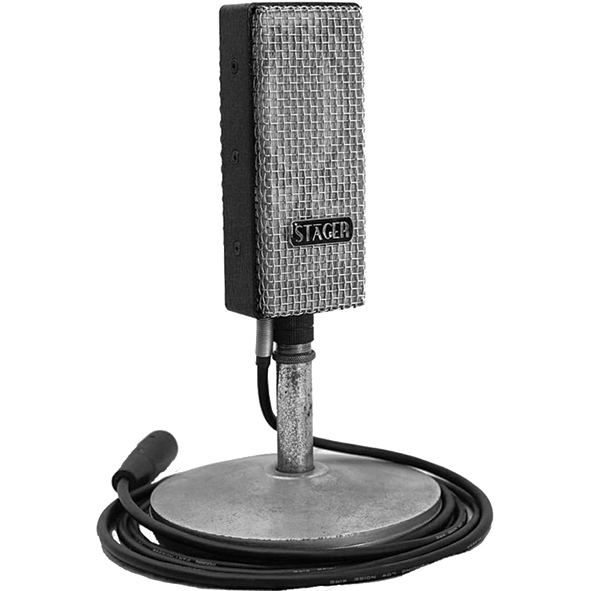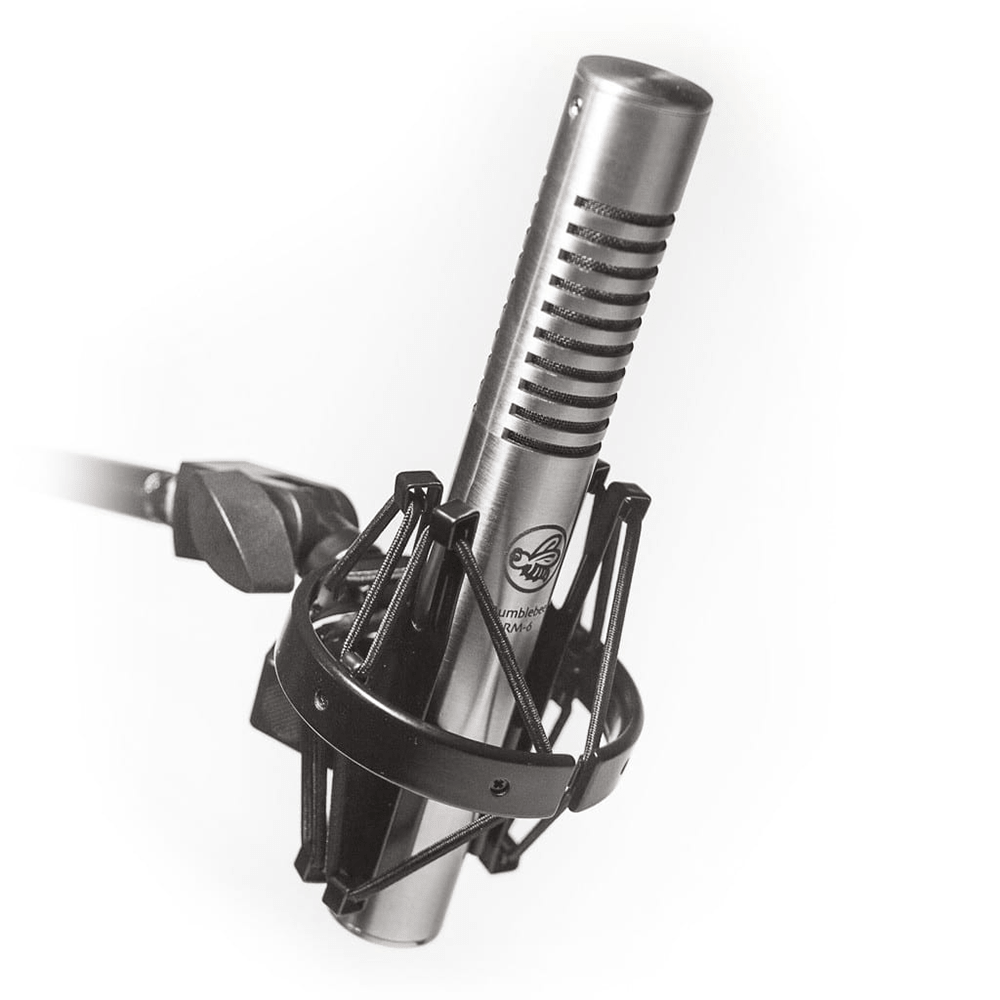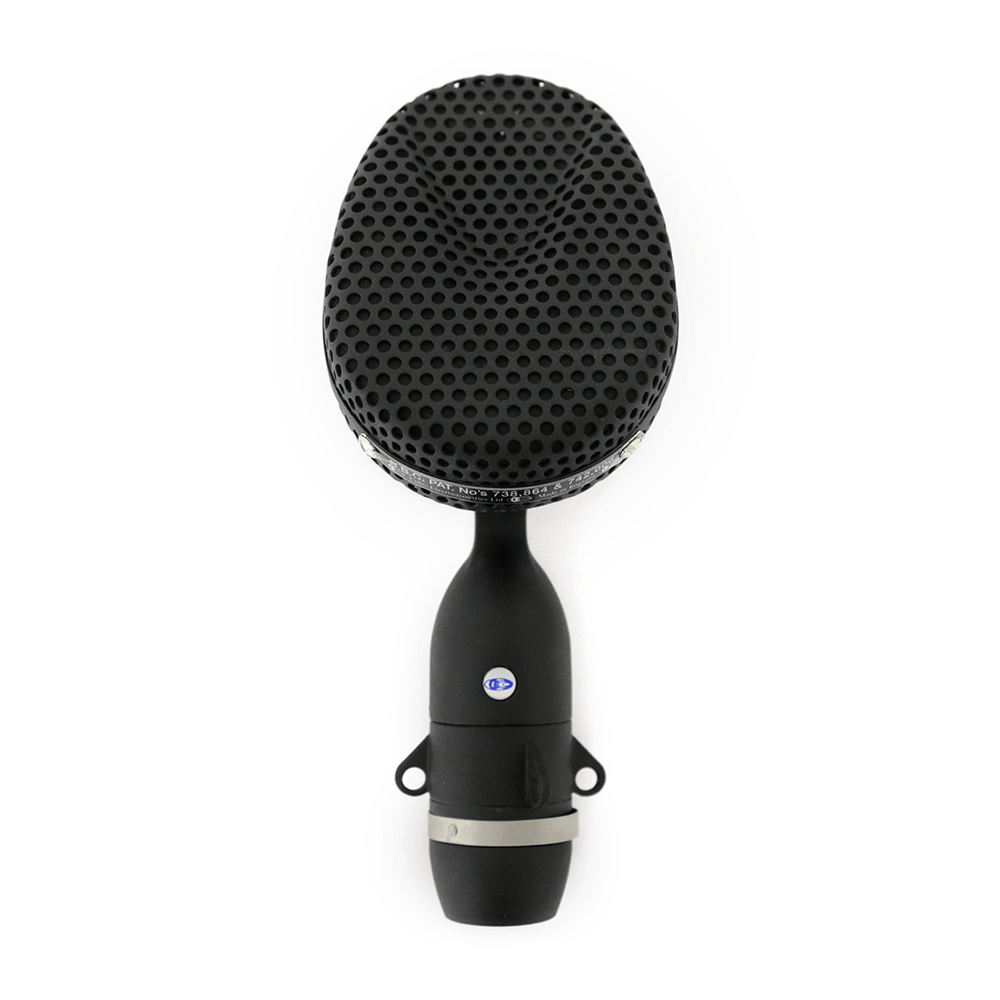Stager Microphones SR-2N Review – The Vintage Touch
Does the vintage-styled SR-2N ribbon mic sound as good as it looks? Mike Hillier takes to the Stager to find out… Price £479 Contact Stager Microphones SR-2N key features: Vintage-style ribbon microphone Handbuilt in Nashville Powerful neodymium magnet Handwound toroidal transformer 2 x 0.25-inch ribbon 1.8 micron ribbon thickness Stereo pairs available Regular readers of […]

Does the vintage-styled SR-2N ribbon mic sound as good as it looks? Mike Hillier takes to the Stager to find out…

Price £479
Contact Stager Microphones
SR-2N key features:
- Vintage-style ribbon microphone
- Handbuilt in Nashville
- Powerful neodymium magnet
- Handwound toroidal transformer
- 2 x 0.25-inch ribbon
- 1.8 micron ribbon thickness
- Stereo pairs available
Regular readers of MusicTech reviews will know we’ve always had a soft spot for ribbon microphones. There’s something magical about the natural, huge bass response and smooth high-end rolloff that colours signals in such an obvious, but easily usable way that appeals to our recording sensibilities.
A ribbon microphone is never going to have the flexibility of a high-quality multi-pattern condenser, nor the instant “shove it in front of the source and hit record” quality of a great moving-coil dynamic microphone.
However, a well-placed ribbon mic on an electric-guitar cab can produce a considerably larger-than-life tone, which naturally tames the high-end fizz, and sits in the mix with little to no need for additional EQ or compression. Similarly, ribbon mics as overheads can make even the most shrill cymbals sit in a mix without any additional work.
We’ve also had good results using ribbons on acoustic string instruments, brass and even some vocalists. So when we were sent this new ribbon mic, hand-built in Nashville no less, we couldn’t wait to put it to work in the studio.
New ribbon
The Stager SR-2N is the second of Matt Stager’s ribbon-microphone designs, alongside the larger SR-1A. Both microphones are handmade at Matt’s workshop in Nashville, and Matt goes as far as to assemble his own ribbon motors and wind his own transformers.
Adding to its boutique authenticity, the SR-2N even comes in a handmade laser-engraved wooden case. The case has space for the mic and a fairly utilitarian mic clip, and will suit studio use, but will need to be replaced with something more substantial for any potential live use.
The mic itself is lightweight and feels sturdy, but like all ribbon microphones, will need to be looked after, as the ribbon can become damaged if dropped or subjected to strong blasts of air. A care sheet supplied with the mic recommends using a pop filter when recording vocals to prevent sudden blasts of air damaging the ribbon, and recommends avoiding use directly in front of a kick drum.
We began testing the SR-2N on our Fender Champ guitar cabinet, placing the mic right up on the grille. We ran the mic into a UA LA-610 preamp with the compressor stage in bypass. Despite being a tube preamp, the LA-610 is remarkably transparent and has a fair whack of gain – suitable for quiet ribbon microphones. On our guitar amp, this wasn’t too important, as the instrument had plenty of level feeding the microphone, but as we progressed through our testing to vocals, we found ourselves maxing out the gain on the preamp to get a healthy level into our DAW.
Despite being a tiny amp, the signal coming from the SR-2N sounded immense. The bottom end was huge, and the top-end roll-off helped to push the mid-range forward in way which simply screams out to be used for blues and rock guitars. Compared to the classic Shure SM57, the Stager has a distinctly warmer sound, focused around the low mids, with a lot less top-end fizz, and no hint of the upper-mid bump on the SM57. The SR-2N is a touch warmer even than the Coles 4038, with a little less top-end, and a more pronounced low mid-range.
Switching to an acoustic guitar, and placed about a foot from the 12th fret, the dark tone of the SR-2N gave our usually bright Blueridge dreadnought a smoother, more relaxed vibe. The SR-2N might not be our first choice for a solo acoustic-guitar piece, but it leaves plenty of room in the mix for other instruments, or even just a more open-sounding mic on vocal. We were also able to use the SR-2N’s off-axis null points to reduce any bleed from a vocal performance recorded at the same time as the guitar.
For a more detailed acoustic-guitar tone, we moved the SR-2N back towards the bridge and added an Aston Starlight (in Vintage voicing) as a neck mic. This pairing produced a rich, wide stereo guitar recording, with the SR-2N contributing much of the bottom end. The overall sound still has space for other instruments, but brought considerably more attention to the finger-picking patterns than the SR-2N on its own, and more depth and warmth than the Aston Starlight alone.
Do I really need this?

Ribbon microphones aren’t going to be for everybody, but if you already have a few decent transparent condensers and moving-coil dynamics to hand in your studio setup, then adding a mic with its own particular voicing is a great way of expanding what you can achieve with your recording projects. To this end, the Stager SR-2N is an excellent option; it’s smooth and clean, with a dark sound that is perfect when matched with bright sources that need to be controlled.
All tied up
Thanks to its dark, coloured tone, the SR-2N is a perfect match for any bright instruments, to help them sit further back in the mix. Guitars, drum overheads and brass instruments will all benefit from the SR-2N’s reduced top-end response. In addition to this, the SR-2N can also be used to ‘age’ a performance; to give a vintage voice to the recording. On a female vocal, the SR-2N produced a convincing, almost 50s jazz-like character.
The proximity effect was noticeably strong here and we ended up using a second mic stand for the pop-shield to guarantee the singer kept a good foot away from the mic at all times. This meant that the signal strength dropped off considerably and we ended up maxing out the level on the LA-610 preamp to get a healthy signal into our DAW.
However, this was still with the compression stage bypassed. For our final recording, we ended up sharing the gain duties between the preamp and compressor stages of the LA-160 and additional gain from an 1176 and an RND 551 EQ, leaving us with plenty room to spare, and a little compression in too, to help smooth things out further.
As you’ll have gathered, Stager Microphone’s SR-2N is not a vocal mic for every occasion – in fact, it’s far from it. It’s got a strong flavour, which is going to suit some voices and even some songs far more than others, but as an option in your mic locker, it opens up a whole new world. And with the added usefulness of having that voicing to hand to use with guitars, drums and indeed anything else you might want to throw at it, you might find yourself reaching for it more often than you would at first think.
Alternatives

Bumblebee
Pro RM-6 €462
If you’re looking for a handmade ribbon mic from this side of the Atlantic, then Artur Fisher’s RM-6 is hand-crafted in Riga, Latvia and uses a 1.8-micron ribbon motor like the Stager SR-2N. The RM-6 is also available as a DIY kit.

Coles
4038 £760
Developed by the BBC in the 1950s, the Coles 4038 is the archetypal ribbon mic and is found in studios up and down the country to this day. Like the SR-2N, it excels on guitar cabinets and overheads, with a similarly big-bottomed, dark tone.